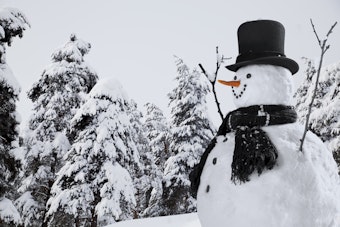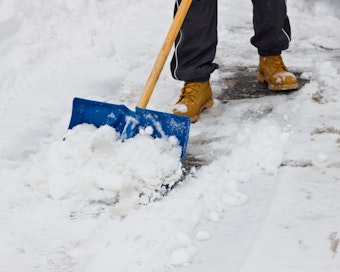Choosing a Tree for the Holidays
Choosing a Tree for the Holidays
<< BackThe holidays are upon us, and depending on your traditions it might be time to go hunting for a tree to adorn your living room. These days there are more options than parking lot pines and big box department stores sporting fake trees. During the season of giving, consider a purchase that not only holds gifts for your family but (in some cases) can give back to the planet too. Read on for a few tips and suggestions on how to choose a tree for the holidays this winter.
For All-Seasons: Potted Trees
Not every home needs a giant A-shaped evergreen to hold a hundred gifts for kids, cousins, and friends from the neighborhood. Apartments, condos, and various styles of homes can benefit from a potted tree that serves double duty – creating a canopy for gifts in December and producing oxygen and aesthetic splendor throughout the rest of the year. In this case, you don’t have to limit yourself to the customary pine family…branch out with ideas such as orange trees, figs and more with help from GoodHouseKeeping.com. Trouble with commitment? You don’t have to let the potted tree put down roots in your home afterwards – get a tree that you can plant in the area where you live with the possibility to visit it and watch it grow in years to come.
For the Long Haul: Artificial Trees
Artificial trees can be a solid option for people with allergies or sensitivities to certain pollens and other tree fragrances, but they’re not always the best option for the environmentally conscious consumer. Contrary to popular belief, live trees are often a more sustainable choice than artificial trees since the latter items are manufactured from a combination of plastic, steel, aluminum, and other components in a manner that makes them difficult to recycle or reuse. These products are frequently imported from “sweat shops” and other facilities where care for worker conditions and environmental factors are of a low priority. If the artificial trees are discarded, they take up space in landfills for generations and are not biodegradable like living trees. According to the New York Times, artificial trees must be used for a minimum of 5-6 years to become a “greener” choice – although that figure can vary according to the consideration you put into live tree options.
For the Earth: Organic Cut Trees
Although it may seem counterintuitive, purchasing a cut tree can be one of your best options for pairing yuletide décor with sustainable practices for the planet. This notion doesn’t include chopping down your neighbor’s ponderosa pine, but using resources like Local Harvest to lead you to listings of tree farms that use organic, sustainable raising and harvesting methods. Organic tree farms often replace a cut tree with two or more to take its place and utilize rocky soil or arduous terrain not suitable for other types of farming. They also avoid pesticides and other agents like chlorpyriforous (a possible neurotoxin) sometimes used to treat trees. Depending on where you live, organic tree farms may offer a unique family experience of harvesting your own tree – a fun holiday tradition and teaching opportunity for the next generation.
Tree Disposal
If you’ve gone the organic tree farm route or have a cut tree from another source, you’ll want to dispose of your tree not long after the holidays come to a close. Dry trees left inside the house can make a mess with falling pine needles and may become a fire hazard. Many regions of the United States now offer recycling, upcycling, and mulching services that you can find using websites like Search.Earth911.com to discover a drop-off program or station near you. While it may be tempting to chop up your tree and burn it in the fire place, this can lead to a build up of pine tar in your flu and chimney which can eventually clog smoke passage or become a fire hazard. If you’re looking to part ways with an artificial tree, BackyardBoss.com offers a few suggestions to take care of business.
Pro Tip: If you’re cutting down your own tree this year, or have trouble with sap or tree resin on your chainsaw or handsaw blades, use WD-40® Multi-Use Product to free up sticky residue and protect the blades from rust and corrosion. You’ll thank yourself the next time you pull out a well-maintained and shining tool from the shed.
FEATURED PRODUCTS
WANT TO GET MORE TIPS AND TRICKS?
SUBSCRIBE TO THE NEWSLETTER




